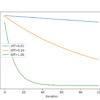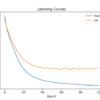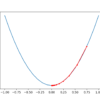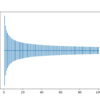Simulated Annealing is a stochastic global search optimization algorithm. This means that it makes use of randomness as part of the search process. This makes the algorithm appropriate for nonlinear objective functions where other local search algorithms do not operate well. Like the stochastic hill climbing local search algorithm, it modifies a single solution and […]










